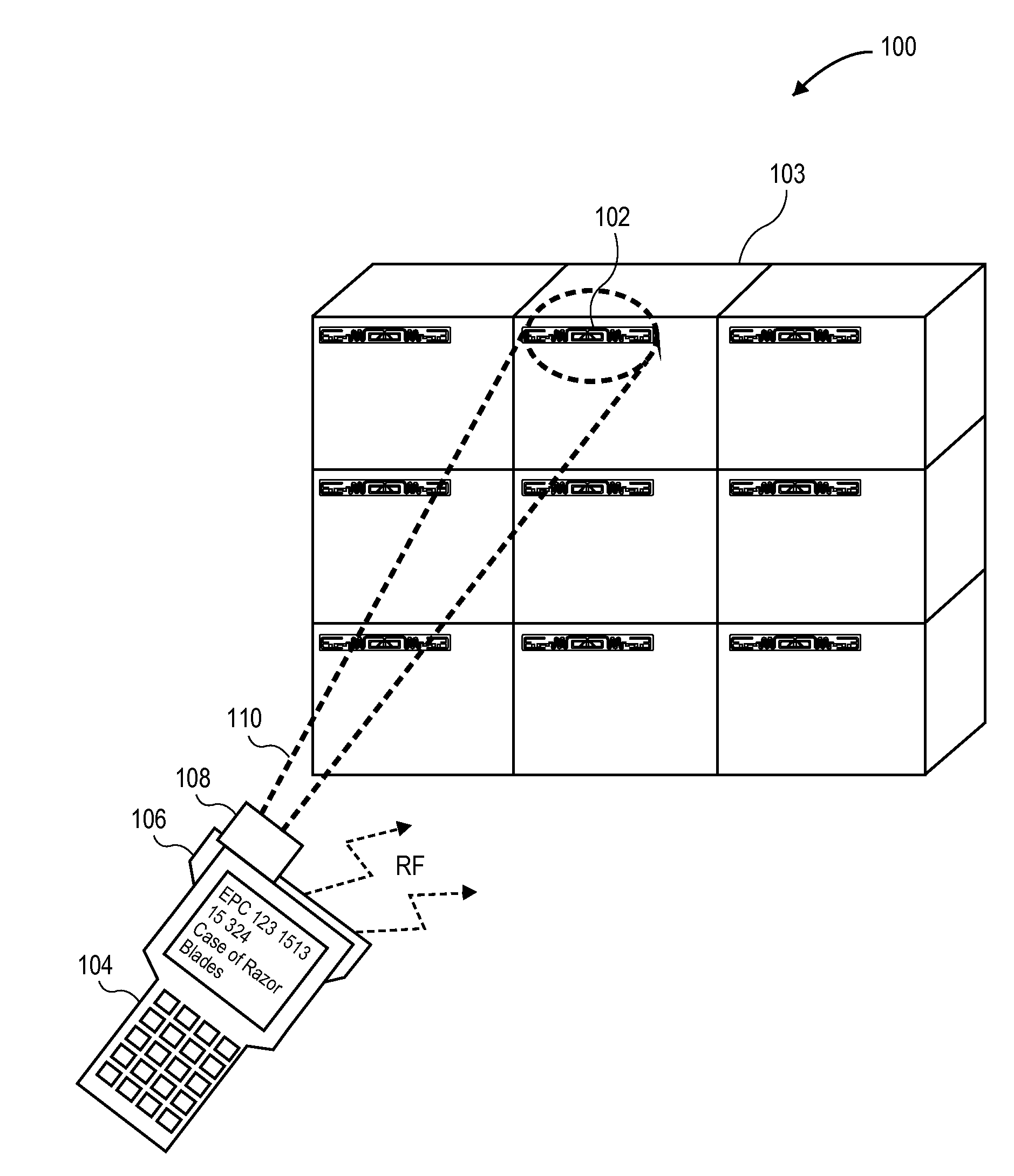Subset selection of RFID tags using light
a technology of subset selection and rfid tag, applied in pulse generators, pulse techniques, instruments, etc., can solve the problems of not being desirable or economical, exposure to light can dramatically reduce the persistent time, and the range of a passive rfid tag is limited, so as to reduce the persistence time
- Summary
- Abstract
- Description
- Claims
- Application Information
AI Technical Summary
Benefits of technology
Problems solved by technology
Method used
Image
Examples
Embodiment Construction
[0052]The following description and drawings are illustrative of the invention and are not to be construed as limiting the invention. Numerous specific details are described to provide a thorough understanding of the present invention. However, in certain instances, well known or conventional details are not described in order to avoid obscuring the description of the present invention. References to one or an embodiment in the present invention are not necessarily references to the same embodiment; and, such references mean at least one.
[0053]FIG. 1 illustrates a simplified block diagram of an RFID system 100 according to an embodiment of the present invention. In this example, tag 102 is attached to container 103 (e.g., box, corrugated box, carton, or the like). Tag 102 is in close proximity to other tags affixed to similar containers, such as on a densely packed pallet. Due to this proximity, handheld reader 104 using RF antenna 106 observes many tags in its RF field.
[0054]In ord...
PUM
 Login to View More
Login to View More Abstract
Description
Claims
Application Information
 Login to View More
Login to View More - R&D
- Intellectual Property
- Life Sciences
- Materials
- Tech Scout
- Unparalleled Data Quality
- Higher Quality Content
- 60% Fewer Hallucinations
Browse by: Latest US Patents, China's latest patents, Technical Efficacy Thesaurus, Application Domain, Technology Topic, Popular Technical Reports.
© 2025 PatSnap. All rights reserved.Legal|Privacy policy|Modern Slavery Act Transparency Statement|Sitemap|About US| Contact US: help@patsnap.com



